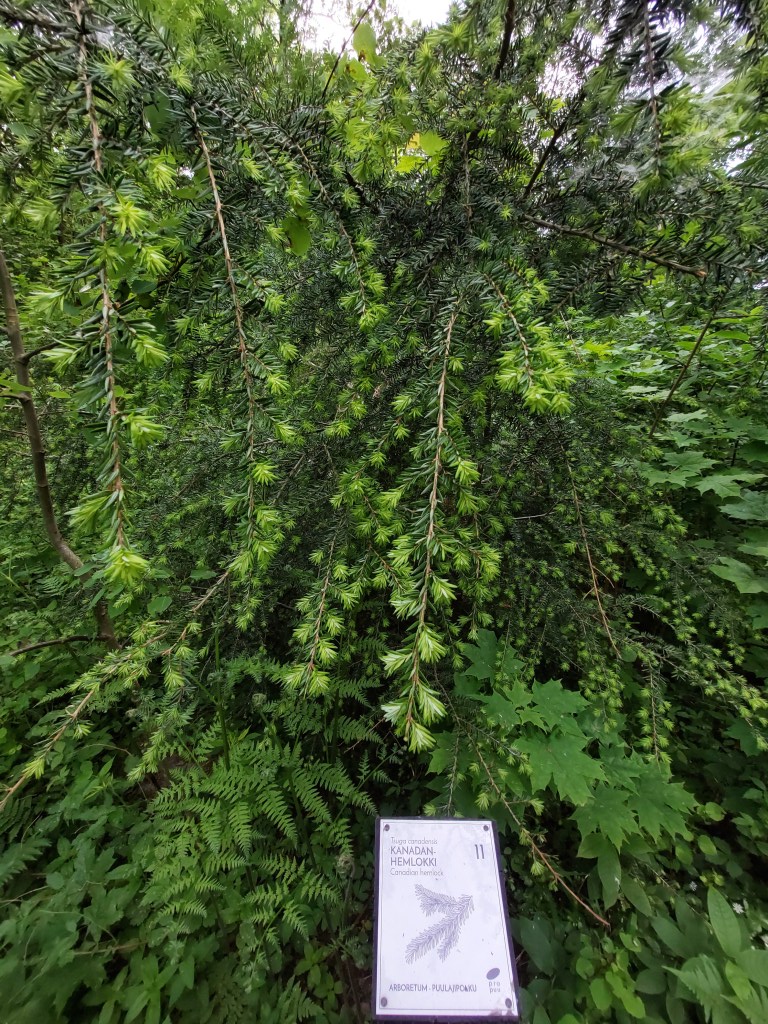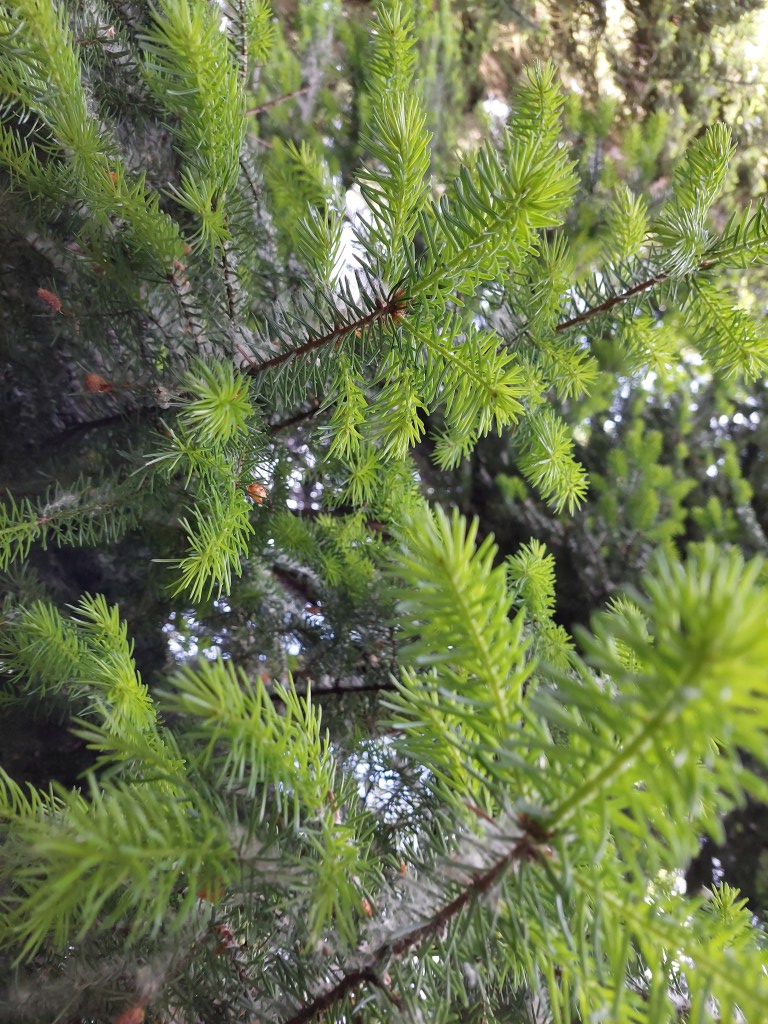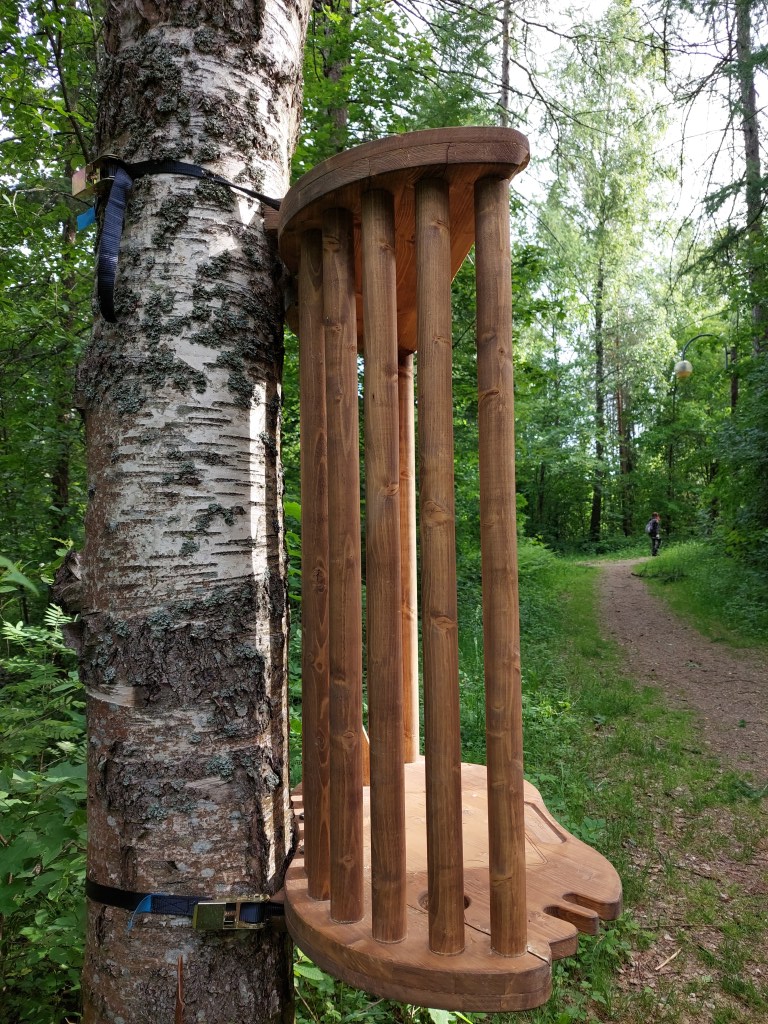


Lanu Sculpture Park in Lahti is a great example of urban nature. It is located in Kariniemi Park in lake Vesijärvi harbour near the centre of the city and in Salpausselkä UNESCO Global Geopark.


The northern slope of Kariniemi hill, and part of the southern slope are protected areas. There is an officially protected grove hill, an arboretum* with numerous tree species, provided with information stands telling about 45 of them.






Spruce thrives almost everywhere in Finland. It is the second most common tree species in Finnish forests: approx. 36% of the trees are spruce. Evergreen, tips are superfood. (Remember to ask permit from the owner of the area and never pick tips from the apical meristem, or top of a young tree, which would stunt it’s growth!) Raw material for violins and other musical instruments, glue boards, furniture, boards, doors, window frames, building logs and other building materials. It is also used in the packaging industry and as raw material for plywood, a good long-fibered raw material for the paper industry and chemical products (e.g. synthetic fibers (viscose).
Engelmann spruce, or white, mountain, silver spruce is native to western North America. Resin and foliage have been used to make medicines. Wood is light and fairly strong, used in paper-making and general construction, making musical instruments (acoustic guitars, harps, violins, pianos), food containers (barrels, thanks to being odourless and having little resin).
Serbian spruce is a threatened species in its native Serbia, Bosnia, and Herzegovina. It makes excellent green walls, tall screens in larger scale landscapes.
Lanu sculpture park turned 30 in 2022 and is named in honour of a world-famous Finnish sculptor, professor Olavi Lanu (1925, Viborg – 2015, Lahti), whose masterpieces in concrete are presented in the area. The sculptures are made of concrete and blend with the landscape. The works look part of nature themselves, are hidden amongst the trees, and covered with leaves, moss and snow in winter. This kind of art is named land art, or environmental, Earth art, Earthworks, it emerged in the 1960s and 1970s. Olavi Lanu became especially famous after pariticipating in Venice Biennale in 1978, where he presented his massive works made of natural materials. The originals of many of the sculptures were created at the artist’s summer house in Punkaharju (a former municipality of Finland, consolidated with the town of Savonlinna in 2013, part of the Southern Savonia region). The sculptures were then cast in concrete in a gravel pit in Renkomäki (south Lahti). Lanu was helped in the laborious and physically demanding casting work by students from Lahti Art Institute (present LAB Institute of Design and Fine Arts in Mukkula, Lahti). The seperate works are as independent as part of the whole ensemble.





Information about the sculptures: https://propuu.fi/arboretum/lanu-puisto
The Kariniemi tree path also includes an English-style Pikku-Vesijäri (lake) arboretum made in the 1950s on Lahti Manor land.

This is a recreational area between central Lahti and the shore of Lake Vesijärvi, suitable for various outdoor activities: walking, cycling, skiing etc. There are lots of benches, street lamps and an eco-friendly workstation Viita. The area is a popular venue for events, including the Kariranta summer theatre and light and musical shows held all year round.


There is also the largest water organ in the Nordic countries, wich was presented to the city by Lahti Energia company in 1997 and offers light and musical shows in summer and autumn.


The route is considered to be moderate, please be ready to the hills, rocky and uneven surfaces. Comfortable walking clothes and shoes are recommended, especially during rainy or snowy weather.



Visiting Lanu park you can admire other attractions in the area: Sibelius Hall and other sights of Wood Architecture Park, lake Vesijärvi harbour, restaurants offering various local food, Pro Puu – a guild of wood professionals responsible for Lanu park, Lahti Aqua company and Kariniemi water treatment plant in the hill etc.
*Tree species in the Arboretum:
- Malus Baccata, Siberian crabapple
- Acer platanoides, Norway Maple
- Pinus Sylvestris, Scots pine
- Betula pendula, Silver birch
- Tilia cordata, Small-leaved Lime
- Betula pubescens, Downy birch
- Abies sibirica, Siberian fir
- Pseudotsuga menziesii, Douglas fir
- Larix sibirica, Siberian larch
- Prunus padus, Bird cherry
- Tsuga canadensis, Canadian hemlock
- Alnus incana, Grey alder
- Populus tremula, Aspen
- Sorbus aucuparia, Rowan
- Picea abies, Common spruce
- Picea engelmannii, Engelmann spruce
- Salix caprea, Goat willow
- Picea omorika, Serbian spruce
- Juniperus communis, Juniper
- Salix pentandra, Bay willow
- Ulmus glabra, Wych elm
- Quercus robur, Common oak
- Larix decidua, European larch
- Salix alba var. ‘Sibirica’, White willow
- Populus ‘Rasumowskiana’, Poplar ‘Rasumowskiana
- Aesculus hippocastanum, Horse-chestnut
- Populus x berolinensis, Berlin poplar
- Picea pungens, Blue spruce
- Pinus cembra, Swiss pine
- Quercus rubra, Red oak
- Fraxinus pennsylvanica, Red ash
- Fraxinus excelsior, Ash
- Populus balsamifera ‘Elongata’, Balsam poplar
- Tilia x vulgaris, Common limetree
- Picea pungens ‘Glauca’, Blue spruce
- Populus trichocarpa, Black cottonwood
- Populus tremula ‘Erecta’, Aspen ‘Erecta’
- Betula pendula var. carelica, Curly birch
- Sorbus intermedia, Swedish whitebeam
- Abies balsamea, Balsam fir
- Abies concolor, White fir
- Populus nigra ’Petrowskiana’, Petrowskiana poplar
- Betula pubescens f. rubra, Red birch
- Pinus peuce, Macedonian pine
- Alnus glutinosa, Black Alder
Photos from walks in Lanu park:




